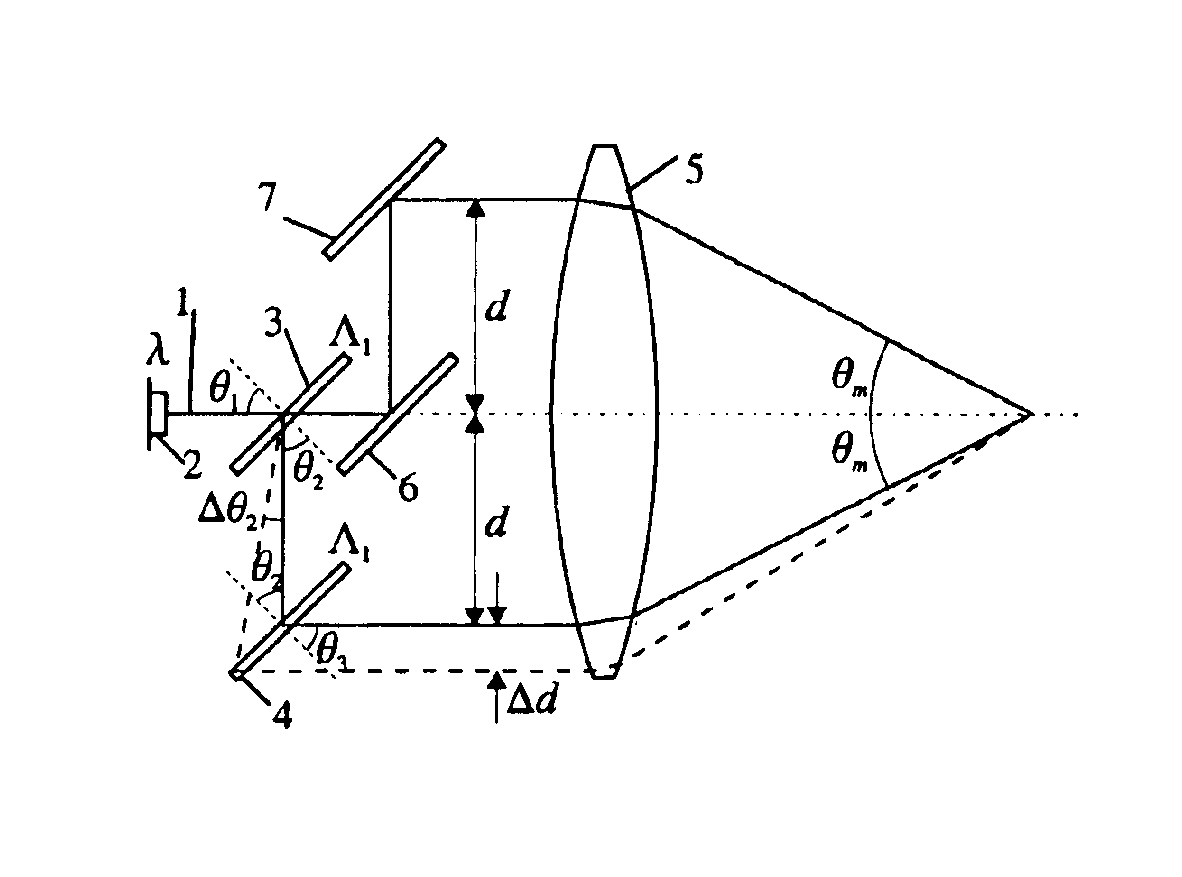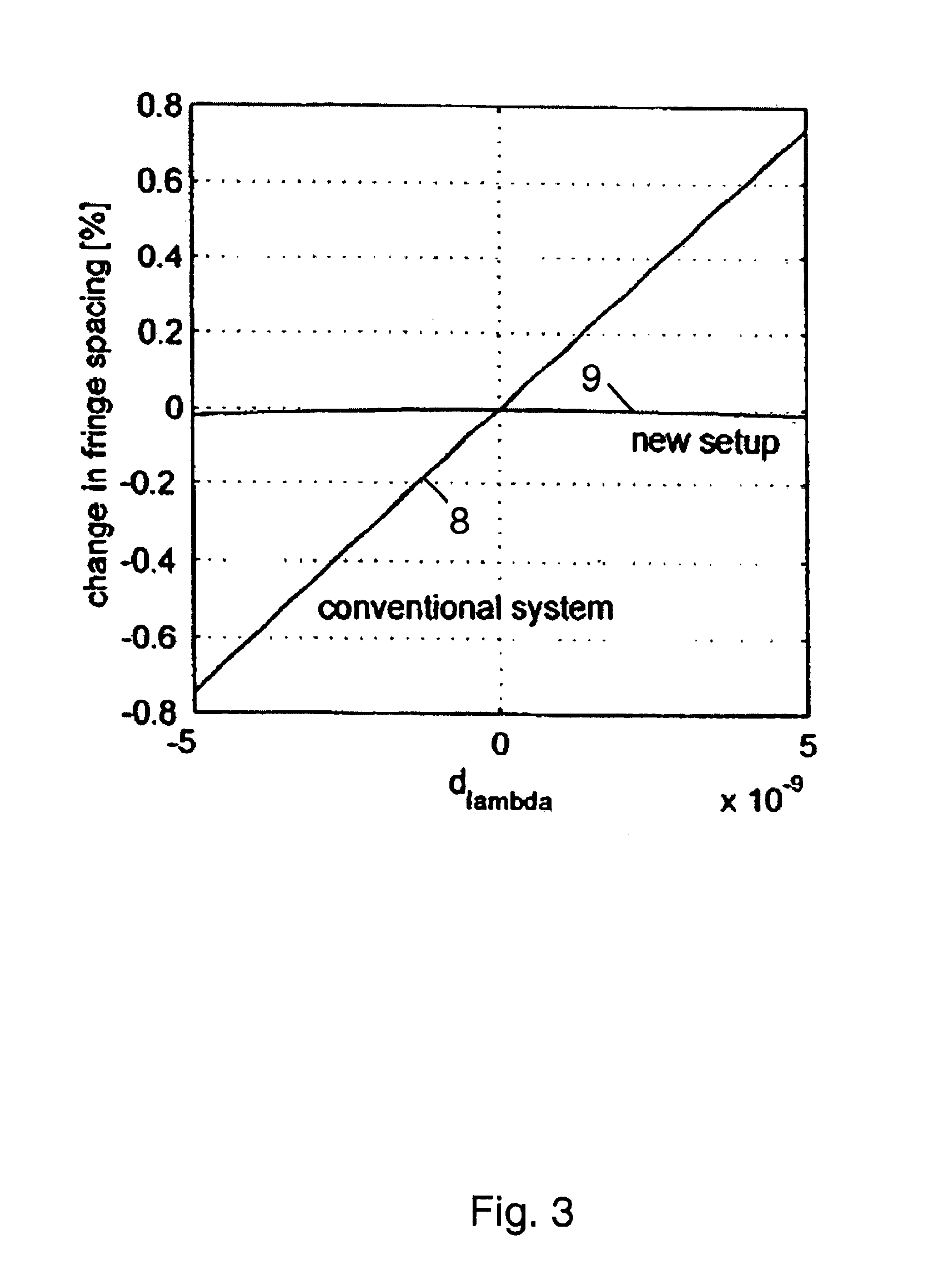Laser doppler anemometry with diffractive optical elements
a technology of optical elements and laser diodes, applied in the field of laser diodes anemometry, can solve the problems of large temperature dependence of laser diodes, large weight of conventional lda systems, and uncertainty in velocity estimation, etc., and achieves the effects of low cost, maximum efficiency, and large scal
- Summary
- Abstract
- Description
- Claims
- Application Information
AI Technical Summary
Benefits of technology
Problems solved by technology
Method used
Image
Examples
Embodiment Construction
The LDA system according to the present invention is schematically illustrated in FIG. 2. A collimated laser beam 1, originating from a laser diode 2 with a collimation lens is incident on a linear grating 3 at an angle of 45 degrees to the normal. The grating both diffracts and transmits the light. The diffracted light is sent to another grating 4 with the same period. Thereby the light diffracted from the second grating 4 will be co-parallel with the transmitted light from the first grating 3. The light from these two “arms” is then sent to a condensing lens 5, which focuses and crosses the two laser beams at their beam waists. The result is that a fringe pattern arises in the section where the two beams are overlapping. The transmitted light from the first grating 3 is reflected in two mirrors 6,7 in order to assure an equal path length in the two arms.
The gratings are implemented as transmission surface relief gratings in photoresist. They are produced using an analog interferom...
PUM
| Property | Measurement | Unit |
|---|---|---|
| quasi-elastic interaction | aaaaa | aaaaa |
| wavelength | aaaaa | aaaaa |
| distance | aaaaa | aaaaa |
Abstract
Description
Claims
Application Information
 Login to View More
Login to View More - Generate Ideas
- Intellectual Property
- Life Sciences
- Materials
- Tech Scout
- Unparalleled Data Quality
- Higher Quality Content
- 60% Fewer Hallucinations
Browse by: Latest US Patents, China's latest patents, Technical Efficacy Thesaurus, Application Domain, Technology Topic, Popular Technical Reports.
© 2025 PatSnap. All rights reserved.Legal|Privacy policy|Modern Slavery Act Transparency Statement|Sitemap|About US| Contact US: help@patsnap.com



